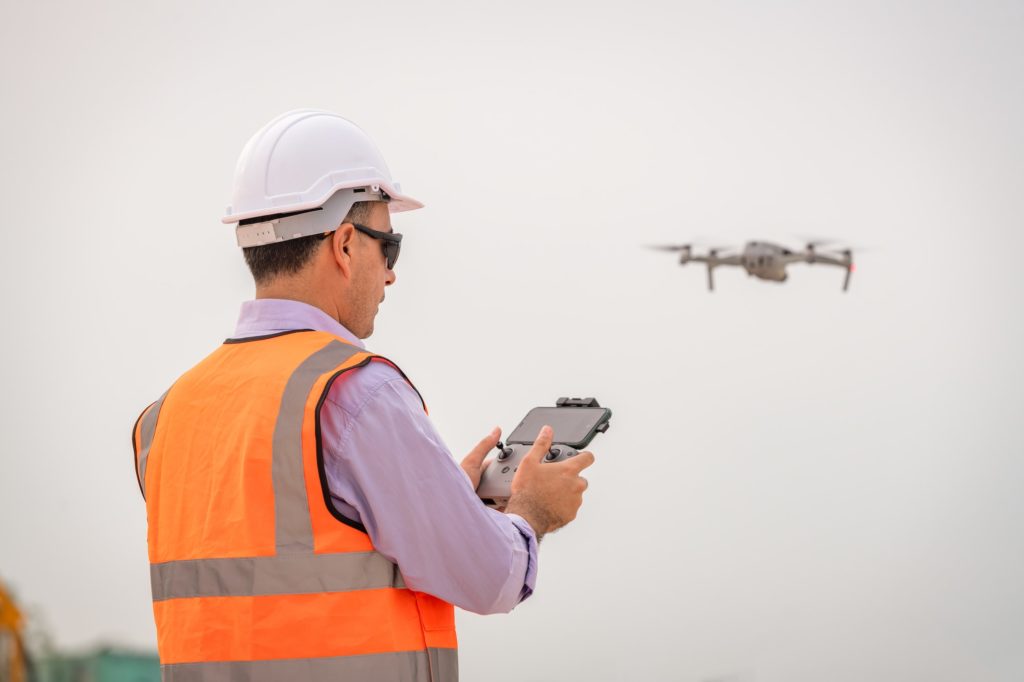
Drones have matured into versatile instruments capable of a myriad of tasks. Their adoption across different sectors has been skyrocketing due to the unique advantages they offer in terms of cost, efficiency, and capabilities. As drone technology continues to advance, more industries are realizing their potential, leveraging them to revolutionize their operations.
Here, we dive into the top five industries that are reaping the most significant benefits from drone services:
1. Real Estate
Captivating Visuals: Drones have revolutionized real estate marketing. Property listings accompanied by aerial footage can give potential buyers a comprehensive view of the property, including the surroundings, layout, and landscape. Such bird’s-eye views are especially beneficial for large estates, commercial properties, or any listing where the terrain and nearby amenities can be selling points.
Virtual Tours: In addition to photographs, drones are also used to produce virtual tours. These allow potential buyers to get a feel of a property without actually visiting, a trend that became even more significant during periods of social distancing.
Property Inspection: Drones can also be used to inspect rooftops, chimneys, and other hard-to-reach areas, ensuring that properties are in good condition before they hit the market.
2. Agriculture
Precision Agriculture: Drones are integral to precision agriculture. They can monitor large expanses of farmland, pinpointing areas that might need more water, pesticides, or fertilizers. This not only maximizes yields but also conserves resources.
Crop Health Monitoring: With specialized sensors, drones can detect diseases or pest problems early on, often before they become visible to the naked eye. This early detection means that farmers can act swiftly, potentially saving large portions of their crops.
Livestock Monitoring: For ranchers, drones offer an efficient way to keep an eye on livestock, ensuring their safety and health.
3. Construction and Infrastructure
Site Surveying: Drones have made land surveying more accurate and significantly faster. They can capture detailed topographical data in a fraction of the time it would take human surveyors, ensuring that construction projects get off to a flying start.
Inspection and Monitoring: For ongoing projects, drones can provide project managers with a real-time overview of the construction site, helping to track progress, spotting potential issues, and ensuring that safety standards are met.
Infrastructure Inspection: Drones are used to inspect critical infrastructure, such as bridges, dams, and highways. They can get close to structures, capturing high-resolution images that can help in the early detection of problems like cracks or wear and tear.
4. Environmental and Conservation
Wildlife Monitoring: Conservationists use drones to monitor wildlife populations, track migration patterns, and even combat poaching. Drones can cover vast areas quickly, offering data that might have taken weeks to gather traditionally.
Environmental Impact Assessments: Before starting large projects, an environmental impact assessment is crucial. Drones can help map out areas, study local ecosystems, and offer insights into potential environmental risks.
Disaster Assessment and Management: In the aftermath of natural disasters, drones can be deployed rapidly to assess the damage, locate stranded individuals, and help coordinate relief efforts.
5. Film and Entertainment
Dynamic Cinematography: Drones have democratized aerial cinematography. Once the domain of high-budget productions that could afford helicopters, aerial shots are now accessible to indie filmmakers too, thanks to drones.
Event Coverage: Be it sports, concerts, or outdoor festivals, drones offer a unique perspective, capturing the scale and excitement of events.
Virtual Reality and Augmented Reality: Drones are being used to capture footage for VR and AR experiences, offering users an immersive experience like never before.
Conclusion:
The industries mentioned above are just the tip of the iceberg when it comes to the potential applications of drones. As technology advances, and as regulations evolve, drones will find a place in even more sectors. The advantages they offer — from cost savings to increased efficiency to new capabilities — make drones one of the most transformative technologies of our age.
While the rapid adoption of drones is exciting, it’s also essential for industries to use them responsibly, adhering to regulations, respecting privacy, and prioritizing safety. As with all powerful tools, the true benefit lies in how they are used. The promise of drones is vast, and the industries leveraging them today are leading the charge into a new era of innovation and possibilities.

